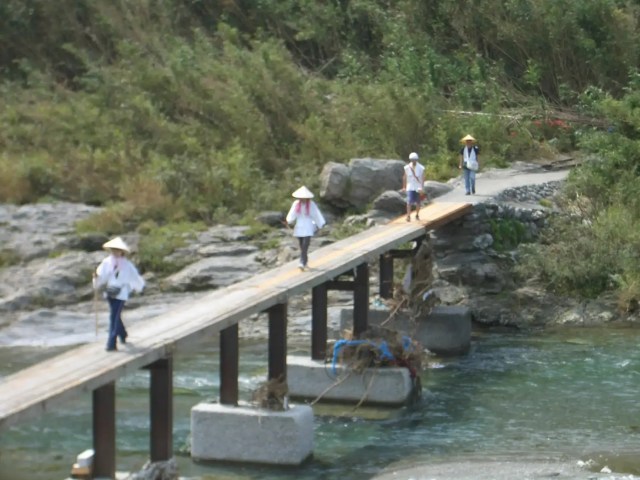
Program helps hikikomori take steps towards reconnecting with the outside world.
Hikikomori is the Japanese term used to refer to shut-ins, individuals who have withdrawn from educational, professional, and social life. Entirely dependent on others, usually family members, to put a roof over their head, clothes on their back, and food in their stomach, hikikomori are often described as a modern social issue, but one organization thinks there may be a way to help them that’s over 1,000 years old.
The Shikoku Pilgrimage, or Shikoku Henro, as it’s called in Japanese, is a circuit around Japan’s island of Shikoku, stopping at temples with connections to Kukai, Japan’s most famous traveling Buddhist monk. There are a total of 88 sites on the Shikoku Pilgrimage, and for roughly 1,200 years since Kukai’s time pilgrims have been tracing his steps around Shikoku.
▼ The Shikoku Pilgrimage route
Those looking for the most authentic experience do the pilgrimage on foot, which takes several weeks to complete. That’s not something that most people can fit into their work or school schedules nowadays, but that’s not an issue for hikikomori, which is why New Start, a Chiba Prefecture-based organization for helping hikikomori reach greater independence, is organizing a Shikoku Hikikomori Pilgrimage.
▼ “A journey to find how you want to live your life – Hikikomori Pilgrimage”
In speaking with shut-ins, New Start noticed that a number of them said that they’d like to go outside their homes and make connections with other people but didn’t feel like they had any reason or opportunities to do so. The cruel irony, though, is that the more time one spends as a hikikomori, the less likely they are to feel like there’s anything for them in the outside world. So New Life began thinking about ways to present hikikomori with a change of scenery and daily environment, which is when they thought to begin organizing hikikomori pilgrimages.
Over 120 hikikomori have taken part in the pilgrimages so far, traveling in groups of three to eight people, plus New Start staff accompanying each group. The goal is to improve participants’ physical health and mental well-being, with the long walks through Shikoku’s beautiful natural environment giving them a sense of concrete purpose and solidarity with their fellow hikikomori pilgrims. Donations and financial support from government and local organizations help to keep costs low, with food and lodging expenses combined working out to roughly 3,000 yen (US$20) a day.
80 percent of participants have reported that the Hikikomori Pilgrimage helped them then make positive changes toward improving their lives, and the program has received commendations from the Japanese government’s Cabinet Office. In many ways, a long group walking pilgrimage feels like a good way to ease back into social interaction and a daily exposure to the world outside one’s room. Though the route is approximately 1,200 kilometers (745 miles) long, the Hikikomori Pilgrimage takes two months to complete it, making it a physical accomplishment but one that doesn’t require an exhausting breakneck-pace forced march to complete. Social interactions are likely at a comfy medium level too, since that walking probably allows for light chitchat, but not necessarily enough for any intense, mentally draining discussion.
For those unable to make the entire two-month pilgrimage, it’s also possible to participate in a 10-day section, dropping in with the other hikikomori pilgrims and heading home early. New Start also maintains a Discord chat for participants so that they can keep in touch and continue offering encouragement to one another after the pilgrimage is over.
The Hikikomori Pilgrimage is open to participants between the ages of 18 and 45, with the next session scheduled for September 28 to November 29. Applications can be made through the New Start website here, and hopefully the walk around Shikoku will be the figurative first step towards a happier future for its pilgrims.
Source, images: PR Times
● Want to hear about SoraNews24’s latest articles as soon as they’re published? Follow us on Facebook and Twitter!

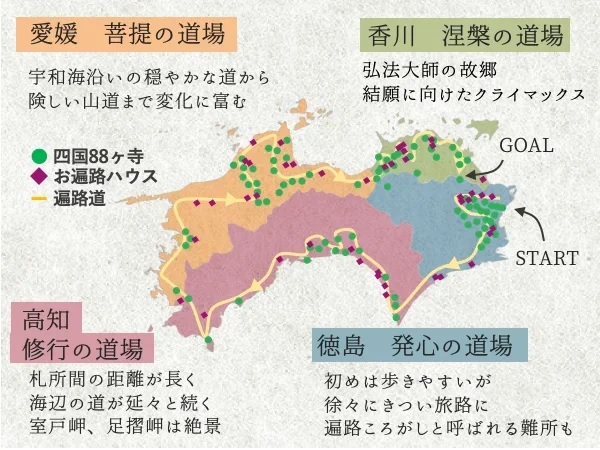
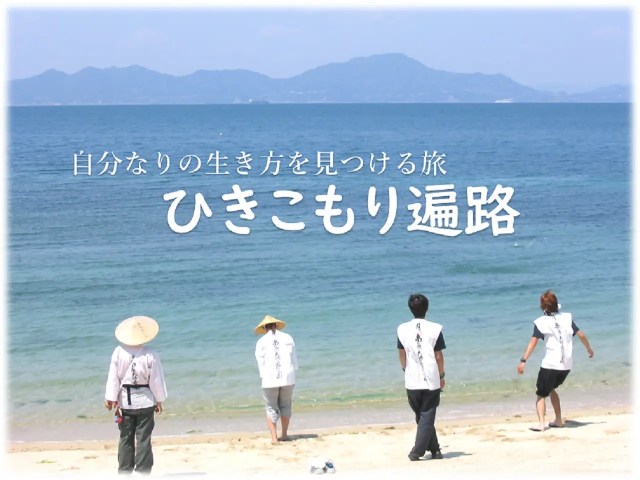
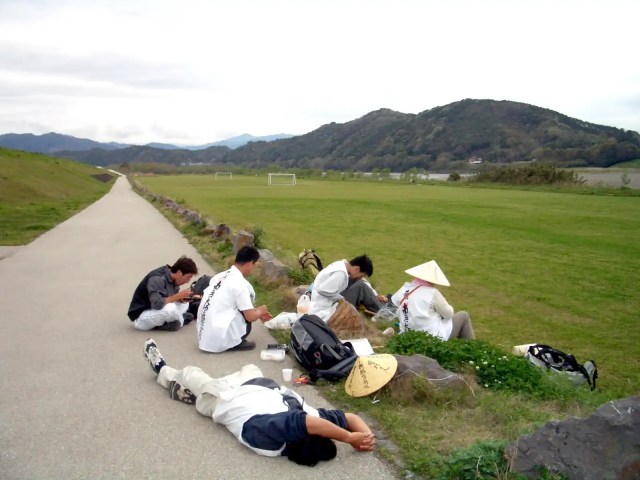
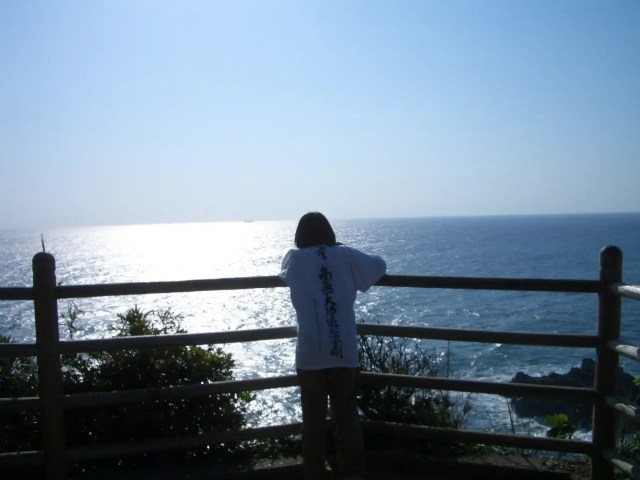
 49-year-old Japanese shut-in spends weeks living with corpse of mother who died at home
49-year-old Japanese shut-in spends weeks living with corpse of mother who died at home Online pilgrimages along Japan’s famous Shikoku Henro route begin later this year
Online pilgrimages along Japan’s famous Shikoku Henro route begin later this year 10 times to avoid traveling in Japan in 2026
10 times to avoid traveling in Japan in 2026 Ramen restaurant’s English menu prices are nearly double its Japanese ones, denies discriminating
Ramen restaurant’s English menu prices are nearly double its Japanese ones, denies discriminating Here’s what our bachelor writers ate over the New Year’s holiday in Japan
Here’s what our bachelor writers ate over the New Year’s holiday in Japan This quiet forest cafe in Japan lets you read all day in the house of a famous author
This quiet forest cafe in Japan lets you read all day in the house of a famous author Things get heavy with the Gold Lucky Bag from Village Vanguard
Things get heavy with the Gold Lucky Bag from Village Vanguard We ate sushi made from Japan’s most expensive tuna ever【Taste test】
We ate sushi made from Japan’s most expensive tuna ever【Taste test】 Tokyo ramen restaurant’s brilliant idea: takeout cups of just ramen broth!【Photos】
Tokyo ramen restaurant’s brilliant idea: takeout cups of just ramen broth!【Photos】 All words in Evangelion theme replaced by cat meow in official remake by original singer【Video】
All words in Evangelion theme replaced by cat meow in official remake by original singer【Video】 Japanese izakaya serves up cheap breakfast…and morning drinks in Tokyo
Japanese izakaya serves up cheap breakfast…and morning drinks in Tokyo How many married people with children in Japan admit to cheating on their spouse? Survey says…
How many married people with children in Japan admit to cheating on their spouse? Survey says… Japanese beef bowl chain Sukiya’s 2026 Smile Box lucky bag basically pays for itself
Japanese beef bowl chain Sukiya’s 2026 Smile Box lucky bag basically pays for itself Starbucks Japan ready to get Year of the Horse started with adorable drinkware and plushies【Pics】
Starbucks Japan ready to get Year of the Horse started with adorable drinkware and plushies【Pics】 Hayao Miyazaki says Happy New Year to Studio Ghibli fans with new art for Year of the Horse
Hayao Miyazaki says Happy New Year to Studio Ghibli fans with new art for Year of the Horse Cup Noodle tries an authentic Jiro-style ramen, but something’s not quite right
Cup Noodle tries an authentic Jiro-style ramen, but something’s not quite right Top Japanese cosplayer Enako returns to Comiket after 6 years, creates mayhem with admirers
Top Japanese cosplayer Enako returns to Comiket after 6 years, creates mayhem with admirers The best Starbucks Japan Frappuccinos we want to drink again in 2026
The best Starbucks Japan Frappuccinos we want to drink again in 2026 We revisited Sweets Paradise after a decade to see if Japan’s dessert buffet still delivers
We revisited Sweets Paradise after a decade to see if Japan’s dessert buffet still delivers That time Seiji called JASRAC to ask why he didn’t get paid royalties for his song being on TV
That time Seiji called JASRAC to ask why he didn’t get paid royalties for his song being on TV Pizza Hut Japan’s hot lucky bags are perfect for a New Year’s pizza party
Pizza Hut Japan’s hot lucky bags are perfect for a New Year’s pizza party Majority of Japanese mayors say foreign residents are essential but most see good and bad effects
Majority of Japanese mayors say foreign residents are essential but most see good and bad effects 7-Eleven Japan starts new temporary luggage storage service in over 300 branches
7-Eleven Japan starts new temporary luggage storage service in over 300 branches Disillusionment at Tsukiji’s tourist-target prices led us to a great ramen restaurant in Tokyo
Disillusionment at Tsukiji’s tourist-target prices led us to a great ramen restaurant in Tokyo Starbucks teams up with 166-year-old Kyoto doll maker for Year of the Horse decorations【Photos】
Starbucks teams up with 166-year-old Kyoto doll maker for Year of the Horse decorations【Photos】 Tokyo considering law requiring more trash cans following litter increase in heavily touristed area
Tokyo considering law requiring more trash cans following litter increase in heavily touristed area Tokyo’s Tsukiji sushi neighborhood asks tour groups to stay away for the rest of the month
Tokyo’s Tsukiji sushi neighborhood asks tour groups to stay away for the rest of the month Tokyo event lets you travel back in time, for free, to celebrate 100 years since Showa era start
Tokyo event lets you travel back in time, for free, to celebrate 100 years since Showa era start Japan may add Japanese language proficiency, lifestyle classes to permanent foreign resident requirements
Japan may add Japanese language proficiency, lifestyle classes to permanent foreign resident requirements Sanrio theme park in Japan announces plans to expand into a Sanrio resort
Sanrio theme park in Japan announces plans to expand into a Sanrio resort Lacquerware supplier to emperor of Japan and Pokémon team up for new tableware
Lacquerware supplier to emperor of Japan and Pokémon team up for new tableware Survey asks foreign tourists what bothered them in Japan, more than half gave same answer
Survey asks foreign tourists what bothered them in Japan, more than half gave same answer Japan’s human washing machines will go on sale to general public, demos to be held in Tokyo
Japan’s human washing machines will go on sale to general public, demos to be held in Tokyo Japan’s deadliest food claims more victims, but why do people keep eating it for New Year’s?
Japan’s deadliest food claims more victims, but why do people keep eating it for New Year’s? We deeply regret going into this tunnel on our walk in the mountains of Japan
We deeply regret going into this tunnel on our walk in the mountains of Japan Studio Ghibli releases Kodama forest spirits from Princess Mononoke to light up your home
Studio Ghibli releases Kodama forest spirits from Princess Mononoke to light up your home Major Japanese hotel chain says reservations via overseas booking sites may not be valid
Major Japanese hotel chain says reservations via overseas booking sites may not be valid Put sesame oil in your coffee? Japanese maker says it’s the best way to start your day【Taste test】
Put sesame oil in your coffee? Japanese maker says it’s the best way to start your day【Taste test】 No more using real katana for tourism activities, Japan’s National Police Agency says
No more using real katana for tourism activities, Japan’s National Police Agency says Starbucks Japan reveals new sakura drinkware collection, inspired by evening cherry blossoms
Starbucks Japan reveals new sakura drinkware collection, inspired by evening cherry blossoms Updated cherry blossom forecast shows extra-long sakura season for Japan this year
Updated cherry blossom forecast shows extra-long sakura season for Japan this year
Leave a Reply